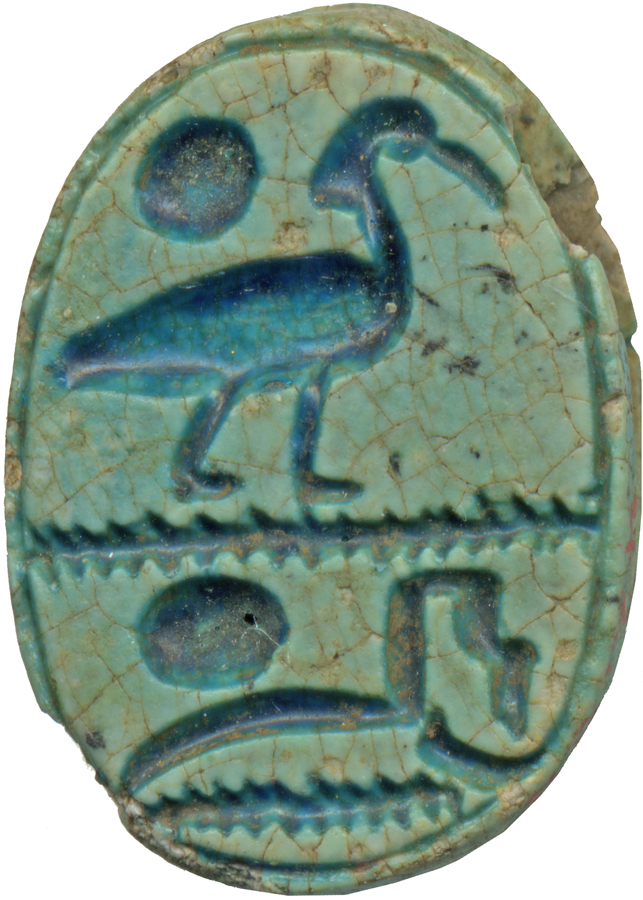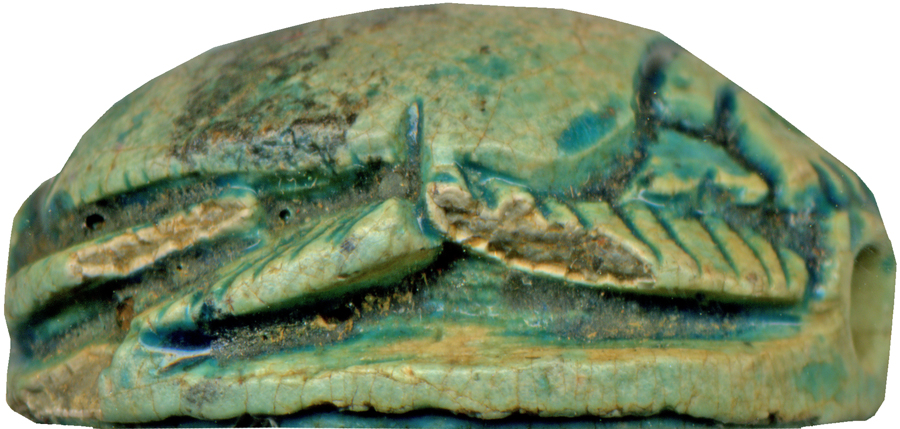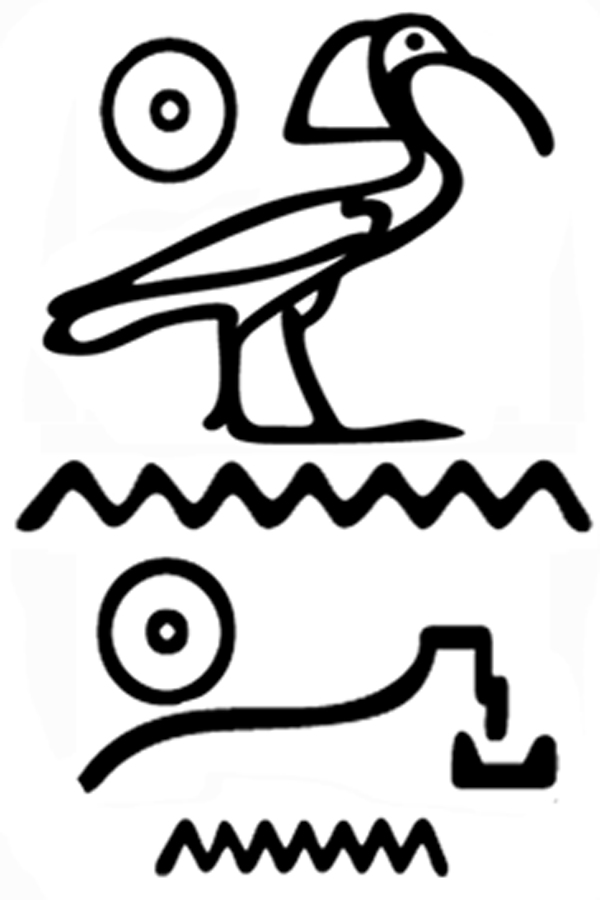Scarab with the Name of King Siptah (1194/1193-1186/1185 BCE)
(Ancient Egypt and Nubia )
This steatite scarab is glazed and inscribed on the bottom in sunk relief technique with the throne name of Siptah (1194/1193-1186/1185 BCE). The scarab has a high back with a simple carved design. Thw workmanship is good.
This scarab functioned as an individualized amulet and was originally mounted or threaded. The amulet should secure the presence of this king, and guaran tee for a private owner his royal patronage.
The form of the "n"-sign is typical for the Ramesside Period and in its elongated version very popular on scarabs of the 2nd half of the 19th Dynasty.
Inscription
Provenance
Provenance (from the French provenir, 'to come from/forth') is the chronology of the ownership, custody, or location of a historical object.
Henry Walters, Baltimore [date and mode of acquisition unknown]; Walters Art Museum, 1931, by bequest.
Geographies
Egypt (Place of Origin)
Measurements
H: 3/8 x W: 9/16 x L: 13/16 in. (1 x 1.5 x 2.1 cm)
Credit Line
Acquired by Henry Walters
Location in Museum
Not on view
Accession Number
In libraries, galleries, museums, and archives, an accession number is a unique identifier assigned to each object in the collection.
In libraries, galleries, museums, and archives, an accession number is a unique identifier assigned to each object in the collection.
42.34












